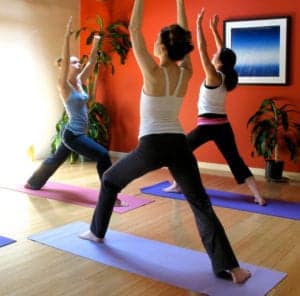Yoga could be helpful in treating depression, according to a new study.
More specifically, Sudarshan Kriya yoga was found to help those with severe depression who didn’t fully respond to antidepressant treatments. Published in the Journal of Clinical Psychiatry, the study researched the effects of controlled breathing during yoga to help battle depression.

Another recent study reached a similar conclusion and found that trips to the gym can help fight depression as well.
“Sudarshan Kriya yoga gives people an active method to experience a deep meditative state that’s easy to learn and incorporate in diverse settings,” Anup Sharma said to Medical Xpress.
Sharma, a neuropsychiatry research fellow in the department of psychiatry at the University of Pennsylvania, led the study. Forty-one million Americans take antidepressants, but half of them do not fully respond to the medication.
Add-on therapies are prescribed to enhance the effects of the medication, but they offer limited benefits and can come with side effects. The side effects discourage patient use, often extending the depressive episode. The authors said the results of the pilot study suggest the feasibility of Sudarshan Kriya as an add-on intervention.
“With such a large portion of patients who do not fully respond to antidepressants, it’s important we find new avenues that work best for each person to beat their depression,” Sharma said. “Here, we have a promising, lower-cost therapy that could potentially serve as an effective, non-drug approach for patients battling this disease.”
Researchers found significant improvement of symptoms of depression and anxiety in medicated patients with major depressive disorder who participated in the breathing technique as opposed to those who did not.
After two months, the yoga participants cut their mean Hamilton Depression Rating Scale score by several points, while the control group showed no improvement. HDRS is the most widely used clinician-administered depression assessment that scores mood, interest in activities, energy, suicidal thoughts, feelings of guilt and other symptoms.
The mean baseline for the HDRS score was 22.0, which indicated severe depression at the beginning of the study. The group that completed the breathing technique for two full months improved scores by 10.27 points on average.
Patients showed significant mean reductions in total scores of self-reported Beck Depression and Beck Anxiety Inventories, with a 15.48 point and a 5.19 point improvement, respectively.
The meditation technique includes a series of sequential, rhythm-specific breathing exercises that bring people into a deep, restful, and meditative state. Slow and calm breaths are alternated with fast and stimulating breaths.
Researchers enrolled 25 patients with major depressive disorder who were depressed for more than eight weeks of antidepressant medication treatment. The patients were randomized to either the breathing intervention group or the control group for eight weeks.
The first week had participants completing a six session program that featured Sudarshan Kriya yoga in addition to yoga postures, sitting meditation and stress education. Participants attended weekly yoga follow-up sessions and completed a home practice version of the technique during weeks two through eight.
“The next step in this research is to conduct a larger study evaluating how this intervention impacts brain structure and function in patients who have major depression,” Sharma said.
Tori Linville is a freelance writer and editor from Clarksville, Tennessee. When she isn’t writing or teaching, she’s faithfully watching her alma mater, the University of Alabama, dominate the football field.


![How To: ‘Fix’ Crepey Skin [Watch]](https://cdn.vitalupdates.com/wp-content/uploads/2017/05/bhmdad.png)












